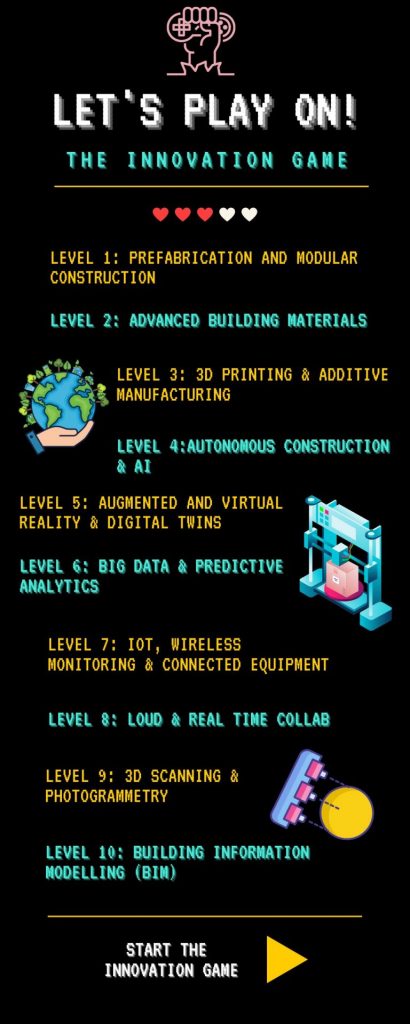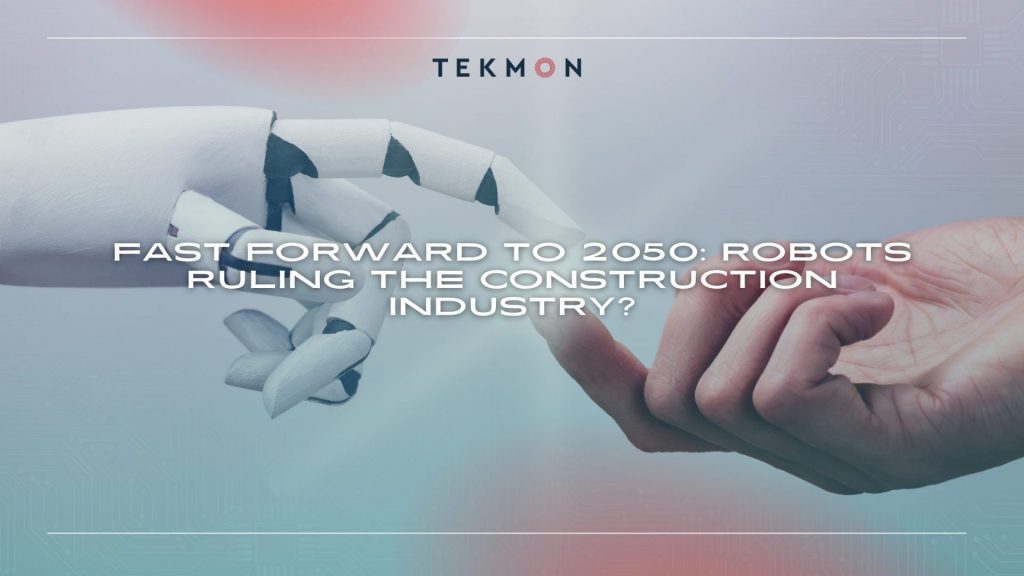The Building Blocks of The Community.
The construction industry plays a major role in driving economic growth in major developed and developing countries and has a direct impact on world GDP. The construction industry is the foundation of a community. The building blocks of any communities consist of schools, hospitals, homes, and most importantly offices, factories, and shops, which contribute heavily towards a strong economy. The unstable economic trends make it difficult for the industry to overcome the prominent productivity challenges this sector faces, resulting in the adoption of unique solutions that will ultimately attract more investments and capital. This makes it important to focus on some of the major shortfalls in the industry, such as its traditional ways of carrying out business and the shortage of skilled labor which has slowed down growth in this industry.
The future aim is for buildings to be built using organic materials that result in better energy efficiency, less pollution and less impact on the environment. The new possibilities for the construction industry are extremely exciting, and important in order to keep up with the demand of an ever growing world population. The increase of affordable housing and highly efficient transportation systems, which will replace cars; making transportation systems more effective when it comes to decreasing the impact to our environment. New technologies are continuing to evolve and innovate the way construction is handled in many parts of the world. The future of construction will focus on efficiency, environmental awareness and safer practices that will in fact provide more jobs for workers, despite the majority of people thinking that advancements in technology reduce job opportunities.
New Level of Realism..
Us, as humans, have come so far when it comes to technology advancements especially in the construction industry. From app technologies and innovations to Augmented Reality/3D printing, these advancements are where we are heading as an economy. The need for homes, businesses and other buildings is expected to rise over the next 50 years. Studies have shown that people will require more affordable houses and companies/builders will be pushed towards using more advanced mechanisms to produce this, in order to help promote cost effective buildings. If construction companies aren’t quick to adapt and learn, and jump on the innovation bandwagon, they will continuously be having to play catch up.
The Future of Construction can be summed up in Three Pillars:
Building a Virtual World: Virtual reality that touches all aspects of life, intelligent systems and the concept of robots running the construction industry.
Factories Run the World: Using prefabrication and modularization to create cost-efficient structures.
A Green Reboot: Addressing scarce natural resources, by using eco-friendly construction methods and sustainable materials (Boualwan, 2021*)
A study by World Economic Forum, identified 10 technologies that will play a crucial role in the future of construction:
- Prefabrication and Modular Construction: In order to give the industry a huge productivity boost, it is essential to help solve the housing crises in many markets, and significantly reshape the way we build today. The Modular (or prefabricated) construction is not a new concept, but technological improvements, economic demands, and changing mind-sets mean it is attracting an unprecedented wave of interest and investment. Realizing the benefits of modular construction will require different stakeholders to make a series of choices. Developers, for example, need to identify segments of the portfolio that can serve as their product core. It is estimated that modular construction in European and US markets has the potential to deliver annual savings of up to $22 billion.
- Advanced Building Materials: To radically innovative materials with entirely new functionalities. The solutions emerging from the building material industry are numerous and wide-ranging. From the incremental innovation of traditional materials and existing characteristics, to the generation of new material combined with additional multifunctional characteristics. For example, self-healing concrete, generated through the addition of bacterial spores, is estimated to reduce lifetime costs by up to 50%. ArcelorMittal have launched organically coated steel, that achieves a 30-year guaranteed durability and does not contain genotoxic/hexavalent chromium.
- 3D Printing & Additive Manufacturing: To enable the production of purpose-built shapes that cannot be produced by any other method. Although 3D printing in the construction industry is still at an early stage of development, the technology enables the production of purpose-built shapes that cannot be produced by any other method. It guarantees productivity gains of up to 80% for some applications, together with an important reduction in waste. Construction time for some buildings could shrink from weeks to hours, and customized components could be provided at much lower cost.
- Autonomous Construction & AI: To enable robots to carry out complex tasks, such as, demolishing structural components at the end of a project. Resulting in fewer workmanship errors, greater accuracy and improved safety. Autonomous equipment also makes use of sophisticated digital tools and new technologies such as out-of-sight drones, leaving only ‘monitoring roles’ for the human worker. Semi-autonomous equipment still requires considerable human control.
- Augmented and Virtual Reality & Digital Twins: To create the virtual model of a building using sensors, IoT, gather data during the construction process and on the completed building and infrastructure asset. Machine learning algorithms utilizes the collected data to improve predictive maintenance, building operations, use cycles and optimize ‘what if’ analysis. Digital Twins can be used to improve project scheduling and create data-rich as-built models. Applications of Augmented Reality on safety, includes the use of geolocation to identify danger areas within a construction site by adding digital elements to a live view.
- Big Data & Predictive Analytics: To uncover hidden trends, unknown correlations and identify patterns during the construction process. Practical implementations of this technology includes,
(a) predicting project delays based on unstructured data
(b) optimizing the routes & efficiency of construction equipment with Telematics & Simulation.
- IoT, Wireless Monitoring & Connected Equipment: To enable smart buildings and infrastructure that integrates IoT to increase data availability, and enable more efficient operations. IoT sensors and communication technology gives companies the ability to track and monitor utilization, and energy efficiency. Resulting in reduced carbon footprint, by having sensors in buildings to switch off the engines. During the construction process IoT can optimize scheduling and cost, due to the fact that currently 50% of construction projects fall behind schedule and 75% behind on cost.
- Cloud & Real Time Collaboration: To enable the frontline workforce to perform their duties efficiently using digital tools such as, mobile applications and cloud-based platforms that enhances collaboration between frontline teams that boosts productivity. This technology is advanced and can already lead the digital transformation in the construction industry as millennials enter the frontline workforce. Applications include efficient incident reporting, fall detection, contact tracing and productivity monitoring. These applications enable the fusion of human collected and IoT data, for optimal decisions in health and safety, technical maintenance and quality control.
- 3D Scanning & Photogrammetry: To document critical milestones, such as hand-offs between different trades, to compare work delivered with as-designed models and drawings for quality assurance. In certain situations, laser scans can mine additional information on a specific aspect of construction, so that corrective action can be taken. For example, an accurate model of a concrete slab can identify areas that are not flat, and the software can determine the volume of material required to adjust the level, a process that reduces waste.
- Building Information Modelling (BIM): To help companies effectively plan their projects through advanced simulations. Although BIM as a technology is part of the 3rd Industrial revolution, it only became a standard in the UK in 2007. This shows the reluctance of the construction industry in adopting new technologies.

Play The Innovation Game or Get Left Behind..
As an industry, the construction industry has come very far in terms of digitization. New innovations are introduced to make site workers’ lives easier and safer, and efficient for companies. However, in order for this transformation to happen, the construction industry will need to be a lot more open and rapid with their acceptance of new technological advancements. This new era of technology will provide a wide range of benefits, the construction industry has the potential to blossom very quickly and very dramatically. Despite the profound changes already taking place, there is a lot more that needs to be done.
*Aref Boualwan (Group Manager Digital Transformation at CCC). Future impact of innovation in the construction industry – focus on the 4th industrial revolution. Presentation delivered at the BIG5 exhibition in September 2021.
** World Economic Forum: Shaping the Future of Construction A Breakthrough in Mindset and Technology.
*** Nick Bertram, Steffen Fuchs, Jan Mischke, Robert Palter, Gernot Strube, and Jonathan Woetzel (McKinsey and Co): Modular construction: From projects to products.

